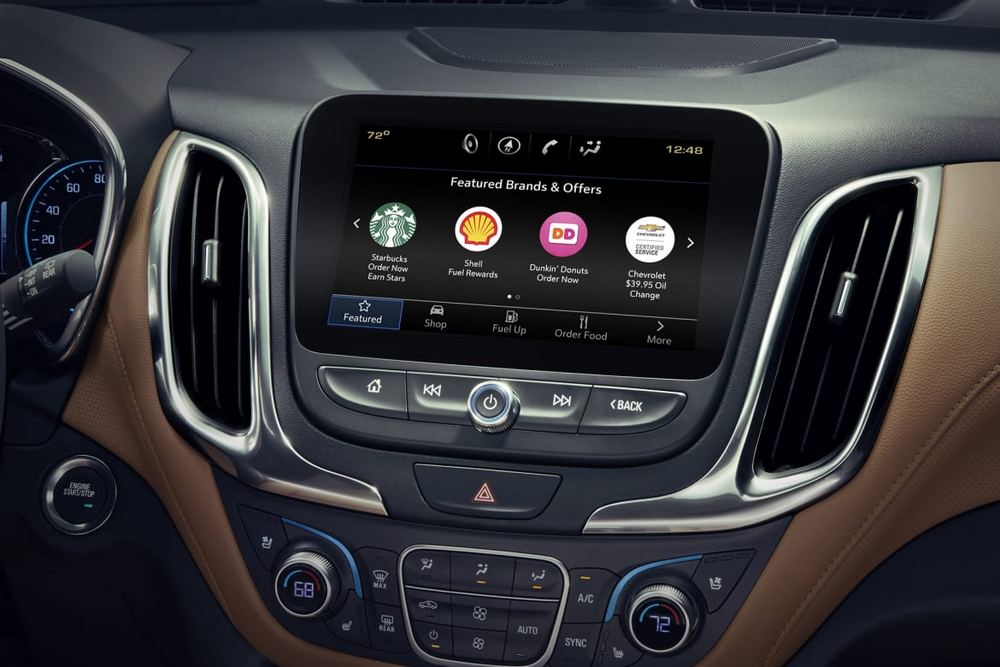

Top-10 E-commerce Trends For 2019
e-Commerce will soon account for 15% of all specialty retail sales in North America (in China, e-Commerce is 23% of all retail) and digital influences nearly 60% of all retail sales. Fueled by mobile, which saw sales increase 55% in a year, eCommerce in North America grew by 16% in 2018 to over $500 billion.
How we interact, discover and purchase goods (as well as return them) is now a 24/7 cycle. And not just in retail, but in B2B as well, where e-Commerce integration has become priority #1.
Customer journeys now merge online and in-store. The notion that e-Commerce is a distinct store or activity is disappearing; digital and in-person are now intricately linked, creating the symbiotic commercial ecosystem we call omnichannel – or, quite simply, business. New effects are emerging, such as that of returns, which have skyrocketed to nearly half a trillion dollars.
As one of North America’s leading e-Commerce agencies with retail and B2B clients such as Fujifilm, Structube, Bench, BMR, Stokes, Garneau, La Vie en Rose, Birks and SAIL – to name just a few – Absolunet has a front row seat when it comes to eCommerce trends. Here are 10 e-Commerce trends to watch for in 2019 — important developments that companies need to consider to ensure the growth of their online and in-store sales growth.
1. Activist Consumers: The Rise of Ethical eCommerce
Consumer awareness of the environmental and ethical footprint of their purchases is on the rise, including digital purchases and the “real or hidden” impacts and cost of eCommerce – and consumerism in general. From sustainability to excessive packaging, consumers are rewarding merchants who resonate with their value system.
- Did they really need to use such a big box?
- How far has this been shipped?
- How and where is this product made?
- Is this brand socially responsible?
Brands and merchants, big and small are using digital to appeal to consumers’ values – and consumers are increasingly guided by their values and ethics when making purchasing decisions.
Societal and environmental impact is exerting an increasing influence on consumer choice, and digitally-savvy brands are leveraging eCommerce to create the visibility and the transparency customers are seeking.

2. The End of Free Returns?
Return rates from eCommerce sales are 2 to 4 times greater than in brick-and-mortar retail, and customer expectations of generous return policies is bringing retailers to an expensive tipping point.
Returns hit $400 billion in 2017 (the equivalent of roughly 1 month of all U.S. retail sales), up 53% since 2015. Generous return policies have long been used to increase conversions by reducing consumer uncertainty. But eCommerce growth, free shipping and free returns have created a dangerous side-effect: the cost of managing returns. 44% of retailers say margins are strongly impacted by returns handling and packaging.
“Your returns can and will be used against you.”
In 2018, Amazon announced it would institute a lifetime-ban for “serial returners”, shoppers who have a habit of returning most of their purchases. 61% of retailers said they would do the same if they had the means to better track returns and “serial returners”.
2019 will see a multitude of retail initiatives to deter returns, ranging from more complex or conditional return policies to incentives to pick up items in store, in order the curb the unsustainable pace at which returns are growing.
Key Trend Indicators
- $400 Billion in returns in 2017 (+53% over 2 years).
- 10% of holiday sales are returned. In fact, December 26th is the biggest day for returns.
- UPS estimated it would be handling 1 million returns a day in January 2016.
- Returns of brick-and-mortar purchases tend to hover at 8%, while eCommerce returns can reach as high as 15% to 30%.
- 62% of consumers are more likely to purchase online if they can return an item in store.
- In the U.K., experts expect 23% of all purchases made in 2018 to be returned.
3. Sales Taxes: The Tax-Free Party is Over for Consumers and Merchants
The tax-free party is over for both merchants and consumers, who will have to deal with regional sales taxes in 2019, no matter where the merchant has a physical presence.
In the months following “South Dakota vs. Wayfair”, more than half of states in the US have enacted an online sales tax or will do so in 2019. Merchants and solution providers will be fast-forwarding discussions and initiatives around eCommerce taxation and reporting.
- 69% of retailers said collecting online sales tax would have a “very negative” effect on their business
- 36% of US internet users said they would shop less online if they had to pay sales tax
Merchants, both B2C and B2B, will have to determine which tax applies to which clients, regions, products and more, and then to calculate and charge state-specific (and product/price specific) sales tax on their online sales, and remit those taxes to a multitude of states and agencies … on time.
Tax rates will vary across the different states and jurisdictions, with variable eligibility and applicability criteria. Tax rates will depend on what is being sold (products AND services) and possibly the jurisdiction where consumers reside.

4. Mobile Faster As PWAs Blur Lines Between Sites and Apps
“It’s a site, it’s an app – no, it’s both.” PWAs are changing how eCommerce and mobile coexist. Brands and retailers will begin moving from sites and apps to a new standard; the Progressive Web App – a hybrid between sites and apps which combine the upsides of each and does away with the limitations.
PWA Features:
- Load 2 to 10 times faster than mobile sites
- Have offline capability
- Can be added to a home screen without ever requiring updating
- Allow push notifications
“Apps as we know them are going extinct. The average mobile user downloads 0 apps per month.”
PWAs create fast-loading, compelling mobile experiences, similar to what brands and retailers achieve with a native app—while also being discoverable and accessible to everyone via the mobile web. No need to market your app; your mobile site is an app.
PWA works by transferring the workload to the device, instead of relying on the web server for every page, layout, click and image, creating a standard experience, regardless of browser, device type and connection.
5. Social Media Gets Transactional
Not satisfied with simply selling leads and traffic, social media platforms are looking to bridge the eCommerce gap by becoming transactional; users will be able to complete purchases without leaving the platform.
Social buying is already standard in China, where 55% of social app users reported buying goods or services directly on a social app.
Private messaging services, which are exploding in popularity, are also expected to become transactional. WhatsApp, Snapchat and Facebook Messenger are showing engagement numbers running into the billions.
Key Trend Indicators
- 87% of eCommerce shoppers believe social media helps them make a shopping decision
- 1 in 4 business owners are selling through Facebook
- 40% of merchants use social media to generate sale
- 30% of consumers say they would make purchases directly through social media platforms

6. Retailers Will Hire Their First AI Employee
Retailers today carry between 2 and 10 times more SKUs than they did 10 years ago – all of which only exists online if it has the related product content to support it (product images, video, descriptions, sizes, attributes and complimentary products).
Even the biggest retailers are struggling to produce product content fast enough to properly commercialize and merchandize their selection.
Product content is the heart of eCommerce. It provides superior product discovery and selection capabilities, which requires detailed product information and critical product-specific attributes, coupled with semantic search.
Retailers must maintain and provide images and videos, catalog descriptions, names, category-specific metadata (e.g., nutrition information for food products), stock availability, product matrices (e.g., size ranges), company/brand logos, product ratings and reviews, pricing, and promotions information for all physical SKUs. Acquiring this information from suppliers is a time-consuming task, requiring various methods and a significant amount of manual activity.
AI will help retailers and merchants create more and better product content, improve SEO and merchandizing.
Enter the robots.
AI-based solutions will increasingly automate the creation, optimization, classification, translation and syndication of product content which, combined, have become a must to keep up with consumer demand for more product information: the merchants with the most (and best) product information win the customer.
7. The QR Code Strikes Back
Anyone with the latest mobile phone can now use their camera to detect QR codes and dig into product descriptions, pricing and other related product information.
Users will see a prompt on screen once their device recognizes a QR code (which generally takes less than a second), with an option to click a link, which takes the user to the desired location. This addresses brand manufacturers’ challenge where limited space on packaging can make it impossible to display all relevant product information – all the while providing an opportunity do create a direct brand-to-consumer relationship.
By making QR code detection a native part of iOS and Android, Apple and Google have removed the main barrier to QR code use and adoption: it’s dependance on apps to read QR codes.
Aside from adding an augmented reality dimension to every mobile user’s daily life, the QR code allows both consumers and merchants to address showrooming – the practice of shopping in-store before completing the purchase online, at the visited merchant’s store or a competitor’s – as a new channel for product discovery and customer acquisition.
Some studies have attributed as much as 20% of digital sales to in-store visits, where the initial discovery occurred in person, but was researched and completed via digital channels, often called “showrooming”.
Key Trend Indicators
- 28% of consumers regularly purchase items online after researching them offline.
- Deloitte’s research predicts that the share of consumers who will check out products in a physical store before actually buying online will grow to 48% – a QR scan can give a brand or merchant more influence over store-to-web purchases.
- Reverse application: Amazon’s shopping app provides a strong object-recognizing function, which uses a markerless AR functionality (Markerless is the opposite of “marker-based” visual recognition; a QR code would be a “marker”, as would a bar code, for example)

8. The Amazon-ification of Major Retailers
The world’s largest 18 marketplaces sell over $1 trillion worth of goods every year. Analysts predict that marketplaces will account for 40% of the global online retail market by 2020. Marketplaces — when operated effectively — are likely to boost customer loyalty, increase average order values, and build trust.
“Marketplaces are eating the world” – Jeff Bezos, Amazon CEO and founder.
Retailers with significant traffic will add marketplace functionality to capture new revenue through commissions on sales and to test product and category interest before direct sourcing the SKUs. Distributors with multiple suppliers can become a client’s one-stop shop by providing and displaying a wider selection of products and SKUs, as well as creating a direct to consumer (D2C) storefront.
This will enhance their customers’ shopping experiences by providing multiple, complementary products and services on a single website (or PWA).
Whether to beat Amazon, eBay and others at their own game, or to get in on the marketplace action, retailers are broadening their reach and selection by integrating the marketplace model to their digital commerce toolkit.
Fighting Amazon by becoming just like the eCommerce giant – a digital marketplace.
- Key Trend Indicators
- Half of all merchandise sold on Amazon comes from third-party sellers
- 12% of major retailers currently operate marketplaces
- 32% are considering launching one
- 86% of retailers say it is CRUCIAL TO OWN the customer transaction and relationship
9. In-Car e-Commerce: Shopping On The Go
Nearly half of the 135 million American commuters use their smartphone to discover the closest gas station, order and pay for coffee, take-out, groceries, parking and more. In all, 77% of commuters who go online while driving* engage in commerce of some kind. Some estimates suggest that once commerce is integrated into the car, as many as 83% of ALL commuters would engage in in-car commerce.
Geolocalization technologies (GPS, Google maps and Waze, for example) helps advertisers understand where users are going, and where they go most often, much like SEO helps advertisers understand what consumers look for and social media reveals what they “like”,
“Your driving behavior and location has monetary value, not unlike your search activity.”
From voice search to GPS and music/podcast apps, in-car eCommerce will become one of the main drivers of local traffic as consumer adoption, contextual advertising and driver-friendly interfaces make “auto-mobile-conversion” work.
80% of mobile users use voice search engines to search for a local business, of which 50% are likely to visit the store within a day, with roughly 18% of those local searches converting to a sale within 24 hours.

10. Product Content Syndication
Product content is at the heart of eCommerce and is one of the keys to a consistent omnichannel experience. Product information (images, descriptions, specifications, attributes, etc.) is now as important as the physical product itself. – without product information, digital consumers can not discover, research, compare or make an informed purchase decision.
As brands and retailers continue to prioritize and invest in product content, digital leaders will go one step further to improve product content syndication.
Syndication provides consistency across channels and gives buyers and consumers the most complete and relevant shopping/buying experience.
Product content syndication is content that is automatically pushed to multiple sites/channels from a centralized point, broadening its reach and visibility while ensuring consistency. Brands and manufacturers syndicate their content to increase brand awareness, product information consistency, SEO and conversions.
From: https://10ecommercetrends.com/
Read more –
Read also


McDonald’s відкрив 10-й ресторан у 2025 році — у селі Гатне біля Києва (+фото)


